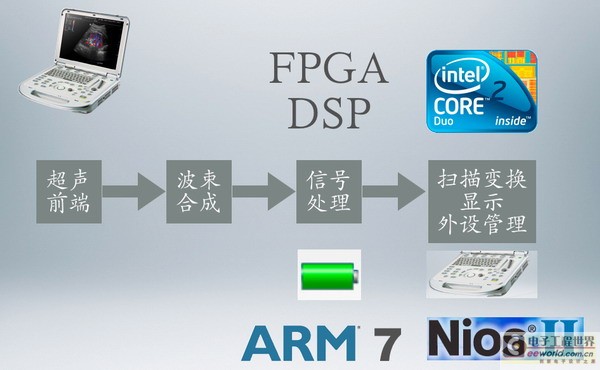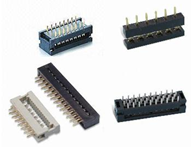"Mindray has two seemingly contradictory principles for the choice of processor platform: 'more' and 'less'. Among them, 'more' refers to diversity, we know whether it is DSP, ARM, X86 or FPGA, GPU, each Platforms have their own advantages and disadvantages, so they can be selected and matched according to their characteristics when designing products. The diversity of processor platforms and reasonable combinations can make products more competitive. "The third held recently At the China International Medical Electronics Technology Conference (CMET2010), Yao Li, executive director and system engineer of Shenzhen Mindray Biomedical Electronic Hardware Technical Committee, shared the secret of Mindray's choice of processor platform. "Less" means the best possible To reduce the number of processors, multiple processor platforms will not only bring trouble to the manufacturing side, but also greatly increase the investment of manpower and capital in the research and development. Each new processor platform needs to purchase new software and re Training engineers, etc. Therefore, Mindray's tradition is to repeatedly use the processor platform that has been successfully used for the first time in multiple products, such as To use a new processor, a hearing must be approved by the Technical Committee. "
According to Yao Li, Mindray ’s star product portable color ultrasound system M7 uses multiple platforms such as X86, FPGA, DSP and ARM to cope with different tasks. Among them, the main processor uses Intel CORE 2 duo with high performance and price. The signal processing uses FPGA and DSP with more powerful computing power, the panel part adopts Nios II, and the power part uses low-end ARM7 series products, which fully embodies the "multiple" word in the principle of Mindray's choice of processor platform. Another principle of "less" is reflected in that once the processor of the same series of products is selected, the same platform will be used in future generations of products, and almost no replacement will be done.

Mindray M7: "more" in the choice of medical electronic processor platform
 Unified platform reuse: "less" in the choice of medical electronic processor platforms
Unified platform reuse: "less" in the choice of medical electronic processor platforms
This strategy, which represents the vast majority of medical electronics manufacturers choosing processor platforms, has led many processor vendors to target this market: "multiple" means that as long as your processor has certain advantages or characteristics, it may be Being selected, "less" means that once selected, a long-term customer with a very stable order is obtained. Therefore, at CMET2010, NXP, Freescale, TI, ADI, Actel, Xilinx and other processor suppliers have vigorously demonstrated the characteristics and advantages of their product platforms.
NXP Semiconductors Greater China Marketing Director Jin Yujie introduced that NXP provides a series of 32-bit MCUs from M3, M0 to M4, which can provide diverse options for medical electronics applications. Among them, Cortex-M3 series products have higher performance, can smoothly transition from the application of ARM7, have rich peripheral functions such as USB OTG, Motor controlled PWM, QEI, CAN, and also have a memory protection unit (MPU) and a nested vector interrupt controller. (NVIC), Flash accelerator, DMA and other unique execution tools; Cortex-M0 series interrupt programs can use C code, M3 compatible, and ultra-low power deep sleep prices make it more conducive to medical electronic devices to achieve lower power Consumption and lower cost performance; the latest M4 series combines the functions of MCU and DSP, which increases the algorithm speed of DSP by 5-10 times.
Freescale Semiconductor marketing manager He Yingwei said that Freescale has been working in the medical electronics field for more than ten years. The company has a dedicated team to develop products for the medical market, such as the recent launch of MCU auxiliary products for a large number of personal medical applications-the first A Universal Serial Bus (USB) software stack. At the end of the month, three new MCUs will be launched: MC9S08LL / LH, MC9S08JE / MM, MCF51JE / MM, of which there will be two different versions in the JE and MM parts, providing compatible pins, seamlessly upgradeable 8 to 32 MCU is very suitable for the development of high and low-end products of the same series.
Guo Jun, MSP430 application engineer of Texas Instruments Semiconductor Division, said that the MSP430 series has been widely used in medical electronic products. For example, TI's low-power DSP technology can also eliminate signal distortion caused by other light sources or movements when reading information, and extract only important signals. Through complex algorithms, DSP technology can accurately read very low level signals. This additional processing function is very useful in pulse oximeters. It can measure absorption at other wavelengths to detect the saturation of other types of oxygenated hemoglobin. In addition, MSP430 also integrates signal chain, power management and display driver components, which is very suitable for new medical equipment requiring more functions.
Unlike other manufacturers, Zhou Wensheng, senior business manager of ADI's Asia-Pacific medical business, did not promote its DSP products, but walked away from the edge, detailing the single-board solution of pulse oximeter launched by ADI. Using this solution can make medical electronics Manufacturers are rapidly launching low-cost, small-size, high-performance portable pulse oximeters, probably hoping to use more convenient designs to attract manufacturers with insufficient design capabilities or want to reduce R & D investment in portable products.
Also participating in CMET2010 were Xilinx and Actel FPGA vendors. According to Xilinx Asia Pacific Marketing and Application Director Zhang Yuqing, FPGAs with ultra-low power consumption, ultra-multi-interfaces, flexible configuration, and stronger computing capabilities are more suitable for medical treatment. Proprietary applications in medical electronics such as imaging, diagnosis, monitoring, and treatment, and FPGAs that are more conducive to innovation will also play an important role in the upgrading of China's medical electronics industry. Actel technical support / training manager Dai Menglin introduced its unique Flash-based FPGA technology. According to its introduction, the Flash-based features make Actel FPGAs have unique advantages such as power-on and firmware error immunity.
The X86 and GPU camps that did not appear at the conference also have their own characteristics. For example, X86 is a current computer general platform, and the interface is very friendly to developers. Moreover, X86 products have been rich in interface and performance after years of Intel ’s efforts. It is also relatively high, but there are birth defects of high price and high power consumption, which Intel is currently making up for. Although the GPU platform has not been widely used, it has gained widespread attention in the medical imaging field due to its image processing capabilities. Yao Li even called it the "next generation processor platform."
However, as stated at the beginning of the article, no matter what kind of processor is impossible to monopolize the market. Therefore, instead of desperately fighting for the same market, each manufacturer needs to make full use of its own technological advantages and specialize in the application market that is more suitable for its own products. Not only that, they should cooperate more fully with each other to make it easier for terminal product manufacturers to match, and this has now been recognized by everyone. For example, Xilinx has started an in-depth cooperation with ARM in FPGA With the integration of the ARM core, MIPS has also licensed the MIPS32TM architecture to Altera. It is believed that with the deepening of these cooperations, the future processor market will be a great scene for the blossoming of flowers and their respective responsibilities. funcTIon ImgZoom (Id) // Re-set the image size to prevent the form from being broken {var w = $ (Id) .width; var m = 650; if (w <m) {return;} else {var h = $ (Id) .height; $ (Id) .height = parseInt (h * m / w); $ (Id) .width = m;}} window.onload = funcTIon () {var Imgs = $ ("content"). getElementsByTagName ( "img"); var i = 0; for (; i
Antenk dip plug connector Insulation Displacement termination connectors are designed to quickly and effectively terminate Flat Cable in a wide variety of applications. The IDC termination style has migrated and been implemented into a wide range of connector styles because of its reliability and ease of use. Click on the appropriate sub section below depending on connector or application of choice.the pitch range from 1.27mm,2.0mm, and 2.54mm here.

IDC DIP Plug Connectors Key Specifications/Special Features:
Materials:
Insulator: PBT, glass reinforced, rated UL94V-0
Contact: phosphor bronze or brass
Electrical specifications:
Pitch: 1.27/2.0/2.54mm
Current rating: 1A, 250V AC
Contact resistance: 30M Ohms (maximum)
Insulation resistance: 3,000M Ohms, minute
Dielectric withstanding voltage: 500V AC for one minute
Operating temperature: -40 to +105 degrees Celsius
Terminated with 1.27mm pitch flat ribbon cable
Number of contacts: 06,08, 10, 12, 14, 16, 20, 24, 26, 30, 32,34, 40, 50, 60 and 64P
With RoHS mark
Used for ribbon cables
DIP Plug Connectors Application
Wire to Board
Apply to Industries : PC, IPC, Consumer Electronics, Automotive, Home Appliance, Medical
Dip Connector,Dip Plug Connector,Dip Direct Pulg Connector,IDC Plug Connector,Idc connector dip plug,1.27mm Dip Plug Connector,2.0mm Dip Plug Connector, and 2.54mm Dip Plug Connector
ShenZhen Antenk Electronics Co,Ltd , https://www.atkconnectors.com
